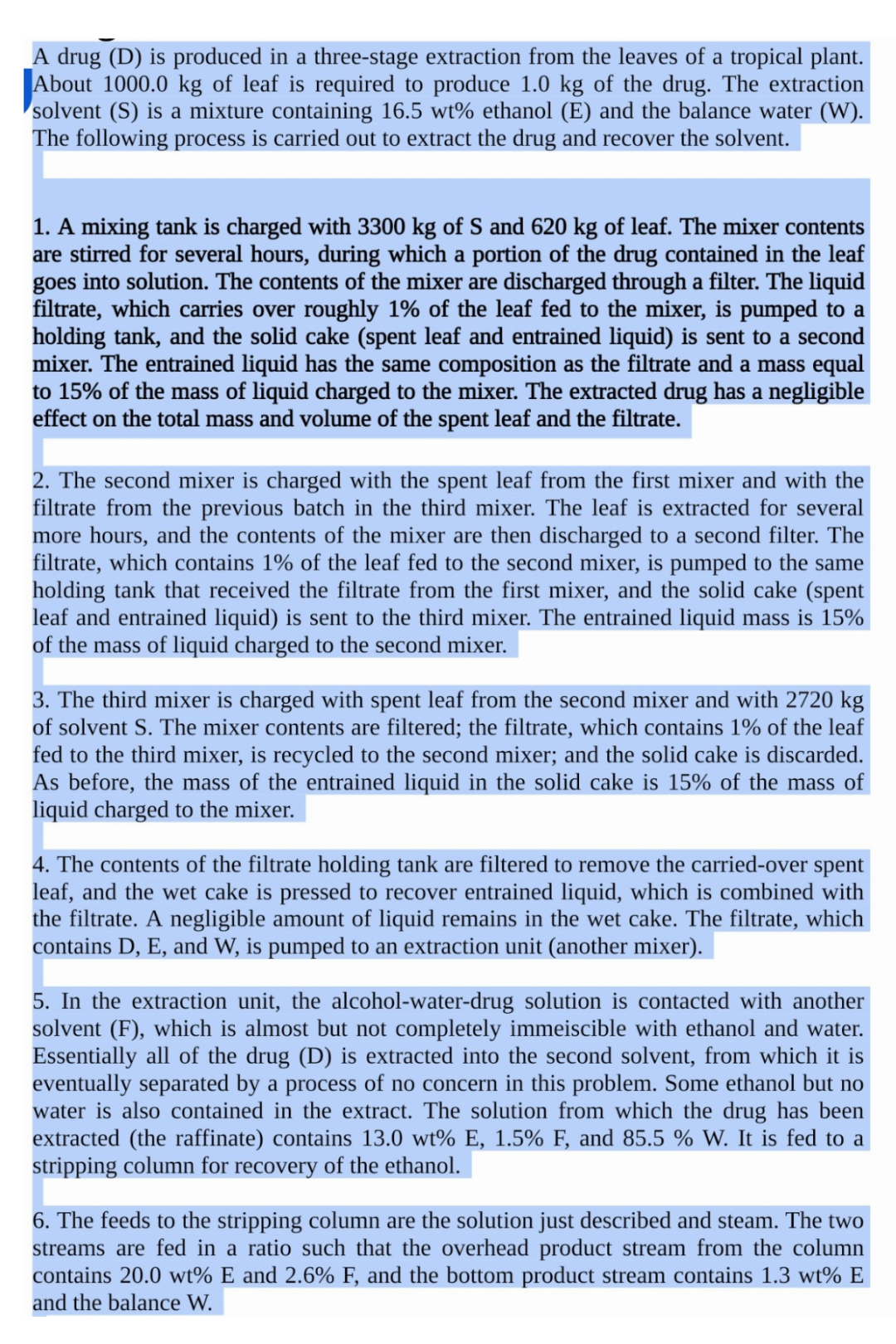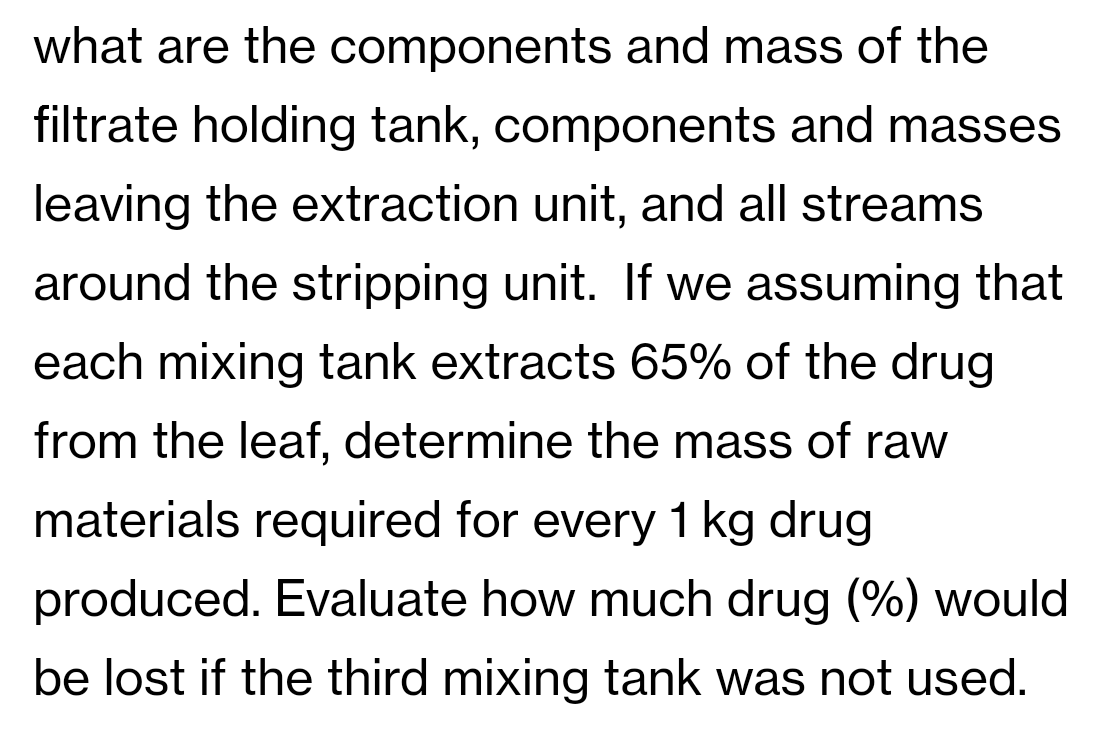Answered step by step
Verified Expert Solution
Question
1 Approved Answer
A drug (D) is produced in a three-stage extraction from the leaves of a tropical plant. About 1000.0 kg of leaf is required to produce


A drug (D) is produced in a three-stage extraction from the leaves of a tropical plant. About 1000.0 kg of leaf is required to produce 1.0 kg of the drug. The extraction solvent (S) is a mixture containing 16.5 wt% ethanol (E) and the balance water (W). The following process is carried out to extract the drug and recover the solvent. 1. A mixing tank is charged with 3300 kg of S and 620 kg of leaf. The mixer contents are stirred for several hours, during which a portion of the drug contained in the leaf goes into solution. The contents of the mixer are discharged through a filter. The liquid filtrate, which carries over roughly 1% of the leaf fed to the mixer, is pumped to a holding tank, and the solid cake (spent leaf and entrained liquid) is sent to a second mixer. The entrained liquid has the same composition as the filtrate and a mass equal to 15% of the mass of liquid charged to the mixer. The extracted drug has a negligible effect on the total mass and volume of the spent leaf and the filtrate. a 2. The second mixer is charged with the spent leaf from the first mixer and with the filtrate from the previous batch in the third mixer. The leaf is extracted for several more hours, and the contents of the mixer are then discharged to a second filter. The filtrate, which contains 1% of the leaf fed to the second mixer, is pumped to the same holding tank that received the filtrate from the first mixer, and the solid cake (spent leaf and entrained liquid) is sent to the third mixer. The entrained liquid mass is 15% of the mass of liquid charged to the second mixer. 3. The third mixer is charged with spent leaf from the second mixer and with 2720 kg of solvent S. The mixer contents are filtered; the filtrate, which contains 1% of the leaf fed to the third mixer, is recycled to the second mixer; and the solid cake is discarded. As before, the mass of the entrained liquid in the solid cake is 15% of the mass of liquid charged to the mixer. 4. The contents of the filtrate holding tank are filtered to remove the carried-over spent leaf, and the wet cake is pressed to recover entrained liquid, which is combined with the filtrate. A negligible amount of liquid remains in the wet cake. The filtrate, which contains D, E, and W, is pumped to an extraction unit (another mixer). 5. In the extraction unit, the alcohol-water-drug solution is contacted with another solvent (F), which is almost but not completely immeiscible with ethanol and water. Essentially all of the drug (D) is extracted into the second solvent, from which it is eventually separated by a process of no concern in this problem. Some ethanol but no water is also contained in the extract. The solution from which the drug has been extracted (the raffinate) contains 13.0 wt% E, 1.5% F, and 85.5 % W. It is fed to a stripping column for recovery of the ethanol. 6. The feeds to the stripping column are the solution just described and steam. The two streams are fed in a ratio such that the overhead product stream from the column contains 20.0 wt% E and 2.6% F, and the bottom product stream contains 1.3 wt% E and the balance W. what are the components and mass of the filtrate holding tank, components and masses leaving the extraction unit, and all streams around the stripping unit. If we assuming that each mixing tank extracts 65% of the drug from the leaf, determine the mass of raw materials required for every 1 kg drug produced. Evaluate how much drug (%) would be lost if the third mixing tank was not used
Step by Step Solution
There are 3 Steps involved in it
Step: 1

Get Instant Access to Expert-Tailored Solutions
See step-by-step solutions with expert insights and AI powered tools for academic success
Step: 2

Step: 3

Ace Your Homework with AI
Get the answers you need in no time with our AI-driven, step-by-step assistance
Get Started


